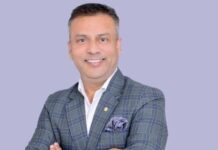“To win in the marketplace, you must first win in the workplace.” –Doug Conant
“Always treat your employees exactly as you want them to treat your best customers.” –Stephen R. Covey
INTRODUCTION: Every business outcome has possessed its roots in either a single person or a team of individuals. The success of any organizations starts and ends with their people/employees. Change is a constant phenomenon. The very nature of work, workplace, workforce, and organization is changing. Being prepared and responding to this change is essential for creating a positive talent brand. A Positive Talent brand would support organizations in attracting, developing and retaining high-quality talent. A positive employee experience will help us in building a positive talent brand.
Employee experience is trying to provide a framework for delivering a greater working environment which enables higher productivity, provide a higher level of engagement and provide a sense of belongingness and purpose. It focuses on designing a productive and meaningful experience through solutions that are compelling, enjoyable, and simple.
EMPLOYEE EXPERIENCE (EX): All of us are currently living in an experience economy. Gone are days where high-quality product and service is the primary focus of most of the organizations. In the experience economy, organizations should do more than producing a high-quality product and delivering high-quality services; they should be focusing on giving more exceptional experiences. They need to provide experiences wherever individuals interact in a manner that’s not solely functionally effective, however unambiguously engaging and unforgettable.
Employee experience (EX) is defined as an experience received by an employee during his/her various interactions with his/her employer that affect their cognition & attitudes and leads to their particular behaviors. Employees form an opinion through these interactions which creates a perception about their employer in their mind. These positive and negatives perceptions affect their happiness, engagement, and productivity. Thus, employee experience is based on the totality of perceptions, both good and bad. To create a positive impression, we need to deliver the more exceptional employee experience. When correctly built, the right employee experience has the power to transform any organization
All of us are in the business of designing engaging experiences for our customers and employees; we can’t separate EX and CX from each other. Happy Employees make happy customers. Happy employees deliver larger productivity, be loyal to the organization, build fewer mistakes, offer higher service, and exert extra discretionary effort whereas happy customers use your services often, spend more, promote your brand, hang-in through crises, and supply input that produces your products and services higher.

TouchPoints: Employee Experience is made up of several touch points /interactions between employee and employer during the tenure of the employment. We can categorize these touch points as physical touch points, human touch points, organizational touch points and digital touch points.
- Physical Touch Points:The physical work environments are known for having a significant impact on engagement, wellbeing and even collaboration and productivity. Physical touch points refer all the parts and parcels of your workplace like offices, factories or even warehouses including but not limited to workstations, desks, machines, conference rooms. It also talks about the workplace design elements that help to provide an engaging and seamless experience. It ranges from the physical location of the office, the general appearance, the amenities or facilities furnished, the design of workstations, conference & meeting rooms, the technology used for booking, accessing, managing and technologies used for communication and collaboration.
- Human Touch Points:During the course of employment, employees get to interact with various people in the organization like their managers, co-workers, enabling functions staffs from multiple departments like HR, Admin, finance, marketing, sales, procurement, IT Support…etc. These are called Human touch points. The experience received through these touch points can influence employee’s happiness, productivity, and success. It carefully looks at the experience received at every touch points. People and their behaviors are one of the primary employee experience drivers. Core Values, Culture, and management style are some of the key influencing factors.
- Organization Touch Points:Organization Structure / Hierarchy, the business processes, the policies are called Organization touch points. It looks at these policies help employees in getting their job effective, simple and straightforward.
- Technical Touch Points:Technology plays a significant role in delivering excellent employee experience. Technical touchpoints or digital touch points include the hardware and software systems such as web applications and mobile applications used by employees for getting their work done. Delivering digital employee experience becomes more important since most of the work-related tools are automated and digitized. Modern-day employees have to use multiple applications to get their work done. Many of these are legacy applications designed to make the functional team easy to automate and complete their work. They would not have developed these applications with an end user in mind. Most of these applications may not talk to each other and doesn’t provide a unified user experience. Employees might need more time to learn these applications and get acquainted. Many organizations do not give access to these applications outside of their corporate network. Employees who are on the move or who has obtained flexible work arrangements, who is working in client places will find it difficult to access these applications outside of their corporate network.
Designing a simple, meaningful, engaging and unified User Interface (UI), User Experience (UX) is the key to deliver greater digital employee experience. Creating an integrated digital workplace portal which can be accessed anytime, anywhere on any device can help organizations in offering seamless digital employee experience. Having a mobile-first digital workplace strategy is the need of the hour as well.
STEPS TO START THE EMPLOYEE EXPERIENCE JOURNEY
- Create employee journey map with all the possible touch points.
- Analyze every touch point and plan for Design Workshop
- Benchmark and define your differentiating, employee experience.
- Develop a Strategy to innovate your employee experience across all touch points.
- Prepare organization to execute the EX strategy.
- Execute your EX-strategy.
- Measure Progress and impact.
- Continue an on-going reinvention process
 Author-Venkatesan Ramachandran is a thought leader, author, and researcher in the Employee Experience and HR Technology area. Venkat is having close to two decades of experience and he is currently associated with ITC Infotech as a Global Practice Leader – Employee Experience Consulting.
Author-Venkatesan Ramachandran is a thought leader, author, and researcher in the Employee Experience and HR Technology area. Venkat is having close to two decades of experience and he is currently associated with ITC Infotech as a Global Practice Leader – Employee Experience Consulting.
Image Credit- Jocob Morgan (www.thefutureorganizations.com) and www.firebrandtalent.com









